Slavery in Montana
However, the state was not free from the ripple effects of American chattel slavery, nor was it devoid of racial oppression rooted in the ideology and structures that slavery had produced. Montana’s history with slavery begins indirectly through the western expansion of the United States, in which wealth accrued through enslaved labor in the South was invested in western development. Additionally, enslaved African Americans accompanied settlers and explorers into what would become Montana, and the legacies of racial caste, labor exploitation, and systemic exclusion persisted in both explicit and subtle forms long after slavery’s formal abolition.
York, the enslaved African American member of the Lewis and Clark Expedition, was among the first recorded Black men to set foot in Montana. His story is emblematic of the complicated and tragic relationship between Black bodies and white expansion. Though a full and necessary member of the Corps of Discovery, York remained enslaved throughout the expedition. He hunted, traded, and negotiated with Native tribes, and his presence often intrigued Indigenous people unfamiliar with African-descended individuals. Yet, despite his critical contributions, York was denied the pay, recognition, and freedom granted to other expedition members. His life stands as a haunting reminder that the exploration and conquest of the American West rested on the labor and exploitation of African Americans—even in areas far from plantation fields.
Montana’s mining economy boomed after the Civil War, drawing African Americans into the region in search of economic opportunity. Many Black men came from Southern states such as Missouri, Kentucky, and Tennessee—former Confederate states where Reconstruction had failed to deliver freedom’s promises. These men sought work as laborers, porters, cooks, and janitors in mining towns like Butte, Helena, and Missoula.
Yet, despite their presence, African Americans remained marginalized in labor markets. They were often barred from unions and confined to the most menial jobs. Their labor contributed significantly to the development of Montana’s infrastructure, but they were not rewarded with social mobility or economic security. This racialized labor hierarchy mimicked the exploitation of enslaved workers, creating a new form of economic subjugation that endured into the 20th century.
Slavery’s indirect influence also reached Montana through financial and institutional channels. Banks and corporations that profited from slavery—including northern insurance companies, shipping firms, and universities—often reinvested their wealth into westward expansion. Railroads, which were vital to Montana’s growth, received substantial funding from entities that had deep ties to slavery.
The Northern Pacific Railway, for instance, relied on investment capital from northeastern banks that had insured enslaved people and profited from Southern plantation economies. In this way, the profits extracted from enslaved labor in the South helped finance the industrial and infrastructural development of territories like Montana, embedding slavery’s legacy in the economic DNA of the region.
The Freedmen’s Bureau, a federal agency created to assist formerly enslaved people in the South, did not operate extensively in Montana due to the state’s limited Black population during Reconstruction. However, its absence meant that Black migrants to Montana in the post-war era received no federal support in establishing lives free from racial terror and economic precarity. Many of these individuals found themselves confronting the same patterns of racial discrimination they had hoped to escape. Housing covenants, job discrimination, and educational exclusion created a racial underclass within a supposedly egalitarian frontier society.
Montana’s legal code did not mirror the explicit racial statutes of the Jim Crow South, but racial discrimination was widespread and socially enforced. Black residents faced restricted access to public accommodations, schools, and political participation. African Americans were often subject to racial violence, including threats, harassment, and occasional lynchings. In the 1920s, the Ku Klux Klan found fertile ground in Montana, capitalizing on anxieties about race, immigration, and labor unrest. The Klan’s presence in cities like Butte and Billings was a testament to how deeply the ideologies of white supremacy—rooted in the logic of slavery—had penetrated even remote western communities.

Montana’s educational institutions, including the University of Montana and Montana State University, were established and funded during a period when American academia remained complicit in racial exclusion. Many universities in the United States benefited from land grants derived from the dispossession of Native peoples and from donations by individuals who had profited from slavery. While specific records for Montana’s universities require further examination, their historical development was undoubtedly influenced by national patterns of racial inequity. The curriculum often excluded or misrepresented Black history, contributing to generational ignorance about slavery’s legacy.
Despite systemic barriers, African Americans in Montana organized and resisted racial injustice. Black churches served as community centers and political hubs. Organizations like the Montana Federation of Colored Women’s Clubs, founded in the early 20th century, fought for civil rights, education, and community welfare. These clubs provided scholarships, ran libraries, and organized cultural events that celebrated Black history and achievement. Women like Lillian Evans Tibbs and Mattie Nelson emerged as leaders in their communities, advocating for dignity and equality in a state that often ignored their existence.
During the 1960s and 1970s, the national Civil Rights Movement found echoes in Montana. Though the state lacked the large-scale protests seen in the South, local activists organized for fair housing, educational equity, and employment rights. Black Montanans formed local NAACP chapters, held community forums, and lobbied state legislators for anti-discrimination laws. These efforts helped shift public policy and slowly eroded the more blatant forms of racial exclusion.
Today, the legacy of slavery in Montana is still evident in racial disparities in education, healthcare, income, and incarceration. Black Montanans remain underrepresented in political office, academia, and business leadership. Hate crimes and racial profiling persist, particularly in areas with few Black residents. At the same time, there is a growing movement to uncover and confront this history. Public commemorations of York and educational programs about Montana’s Black pioneers are slowly gaining traction. Museums, libraries, and historical societies are beginning to include the African American experience in their narratives of state history.
Even though slavery was not a legalized institution in Montana, its economic ripples were felt throughout the developing West. Much of the capital investment that fueled western expansion—including railroad construction, mining development, and agricultural speculation—was tied to fortunes made in the East and South from enslaved labor. Prominent eastern banks and institutions that had profited from slavery often financed western ventures. Some corporations with deep ties to slavery—including shipping and insurance companies—poured resources into Montana’s early infrastructure and industries.
Railroads, in particular, were a cornerstone of Montana’s expansion. The Northern Pacific Railway and other lines used funding from entities that either directly or indirectly profited from slavery, and they sought cheap labor in forms that echoed the exploitation of Black bodies. While Chinese immigrants formed the majority of the railroad labor force in the West, African Americans were often recruited into service roles—cooks, porters, janitors—replicating caste labor systems familiar from the South.
Black Military Service in Montana During and After the Civil War Following the Civil War, Black soldiers—commonly known as “Buffalo Soldiers”—were stationed at forts across the West, including in Montana. These regiments, notably the 10th Cavalry, played pivotal roles in enforcing U.S. expansion and subduing Native populations, including the Northern Cheyenne and Lakota. Forts like Fort Keogh and Fort Missoula became outposts of both frontier violence and Black military presence. The irony of formerly enslaved or recently freed African American soldiers enforcing settler colonialism in Indigenous territories complicates our understanding of race, freedom, and oppression in Montana. These men sought to escape the racism of the South and earn honor and stability through military service. Still, they found themselves in morally complex positions, tasked with enforcing policies of dispossession against Native peoples.
Montana’s economic growth after the 1860s was driven in part by the mining boom and expansion of railroads. African Americans, like other marginalized groups, migrated west to find work in mines, construction, and service industries. The Great Northern Railway and other lines needed a stable workforce, and Black men from Missouri, Kentucky, and Arkansas came in search of opportunity.
However, opportunities were sharply limited by racial discrimination. Black Montanans were excluded from unions and relegated to the lowest-paying jobs. Domestic labor, janitorial services, and bootblacking were among the few options available to them. Black women often worked as maids or laundresses. Even in a “free” state, the economic structure resembled a racial caste system reminiscent of slavery’s afterlife.
While Montana never had a Jim Crow legal code like in the South, de facto segregation was widespread. Black residents were denied access to many public accommodations. Restaurants, hotels, and theaters either refused service or segregated seating. Housing segregation confined Black families to specific neighborhoods, often near rail yards or industrial zones.
Helena and Butte were home to Montana’s largest Black communities in the early 1900s. Despite creating schools, churches, and social organizations, African Americans faced regular acts of discrimination, hostility, and violence. The Montana legislature never enacted sweeping civil rights protections, leaving Black residents vulnerable to systemic exclusion.
Montana was not immune to the national resurgence of the Ku Klux Klan in the 1920s. The Klan gained a foothold in cities like Butte, Billings, and Great Falls, fueled by anti-Black, anti-Catholic, and anti-immigrant sentiments. Klan members participated in marches, burned crosses, and intimidated minority residents. While Montana’s Black population was small, the Klan’s activities reveal how deeply white supremacy had embedded itself in the social and political fabric of the state.
These movements drew directly from racial hierarchies forged during slavery. Though no longer enforced by law, these ideologies shaped school curricula, hiring practices, and neighborhood planning.
York’s place in Montana history reflects the tension between recognition and erasure. Though he was arguably the first African American in Montana and played a central role in the Lewis and Clark Expedition, his story was largely forgotten for over a century. In recent decades, renewed scholarly interest has attempted to reclaim York’s legacy.
Statues and plaques have been installed, and several educational institutions in Montana now include York in their curriculum. However, his life is often romanticized—his suffering under slavery downplayed in favor of a rugged, Western iconography. York has become a symbol of Black endurance, but his story is also a reminder of how America often buries the brutality of slavery behind tales of exploration and heroism.
Black women in Montana worked under difficult conditions but formed the bedrock of early Black communities. They worked in laundry businesses, as domestic servants, and occasionally as teachers or midwives. Many were instrumental in organizing churches, women’s clubs, and mutual aid societies.
The Montana Federation of Colored Women’s Clubs, formed in 1921, aimed to improve conditions for Black families, fight discrimination, and promote education. Women like Mattie Nelson in Helena and Lillian Allen in Butte played key roles in community leadership, representing the strength and resilience of Black women in the post-slavery American West.
Schooling for Black children in Montana was often unequal. Though the state did not mandate separate schools, local districts routinely segregated students. Black students received outdated textbooks, were placed in overcrowded classrooms, or subjected to racist curricula. Some Black families resisted by forming private schools or pushing for integration.
Montana's educational system perpetuated myths about slavery and the Confederacy, with history books often portraying the Civil War as a conflict over “states’ rights” rather than human bondage. These educational inequalities contributed to cycles of marginalization that mirrored conditions in the South long after slavery had ended.
Montana was geographically distant from the South, but Black residents still participated in national civil rights struggles. In the 1940s and 1950s, the NAACP established local chapters in Montana. Civil rights leaders pushed for anti-discrimination ordinances, fair housing, and equal access to employment.
Black soldiers returning from World War II and Korea brought with them heightened political awareness. Many organized protests, wrote letters to local newspapers, and lobbied public officials. Though victories were slow and partial, Montana’s Black community was part of the broader Black Freedom Struggle.
In the 21st century, Montana remains one of the least racially diverse states in the U.S. Black Montanans often report feeling isolated, misunderstood, or targeted. Incidents of police profiling, employment discrimination, and hate crimes continue to occur.
At the same time, Montana has seen renewed efforts to reclaim Black history. Community leaders are promoting educational initiatives, celebrating Juneteenth, and developing heritage tours focused on Black pioneers. Still, systemic inequalities—shaped by centuries of racial exclusion—persist.
Montana’s museums, textbooks, and historical societies have only recently begun to include the stories of Black Americans and the legacy of slavery in the state’s narrative. Public memory in Montana has long centered on white pioneers, cowboys, and settlers—rarely acknowledging the foundational role that African Americans played, even in small numbers.
The push for recognition—whether of York, Black military regiments, or the Montana Federation of Colored Women’s Clubs—is part of a broader reckoning. Monuments, curricula, and archives must be reshaped to reflect a fuller, more truthful history.


















Alabama
Alaska
Arizona
Arkansas
California
Colorado
Connecticut
Delaware
Florida
Georgia
Hawaii
Idaho
Illinois
Indiana
Iowa
Kansas
Kentucky
Louisiana
Maine
Maryland
Massachusetts
Michigan
Minnesota
Mississippi
Missouri
Montana
Nebraska
Nevada
New Hampshire
New Jersey
New Mexico
New York
North Carolina
North Dakota
Ohio
Oklahoma
Oregon
Pennsylvania
Rhode Island
South Carolina
South Dakota
Tennessee
Texas
Utah
Vermont
Virginia
Washington
West Virginia
Wisconsin
Wyoming

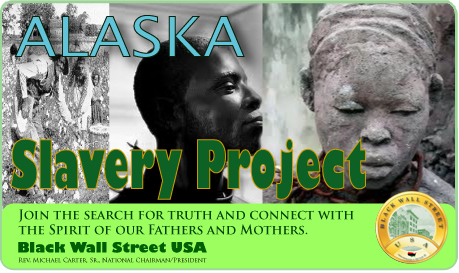


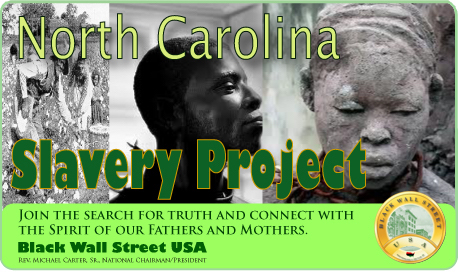
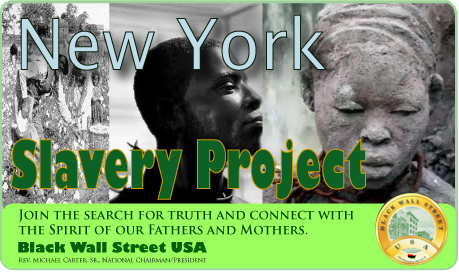

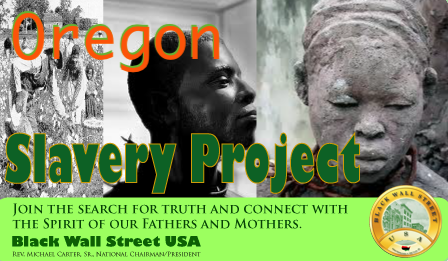

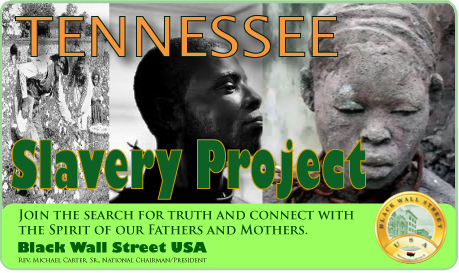
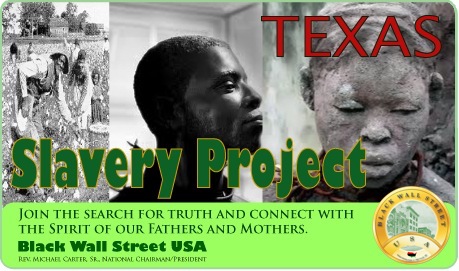



BlackWallStreet.org

Slave Records By State
See: Slave Records By State
Freedmen's Bureau Records
See: Freedmen's Bureau Online
American Slavery Records
See: American Slavery Records
American Slavery: Slave Narratives
See: Slave Narratives
American Slavery: Slave Owners
See: Slave Owners
American Slavery: Slave Records By County
See: Slave Records By County
American Slavery: Underground Railroad
See: American Slavery: Underground Railroad

